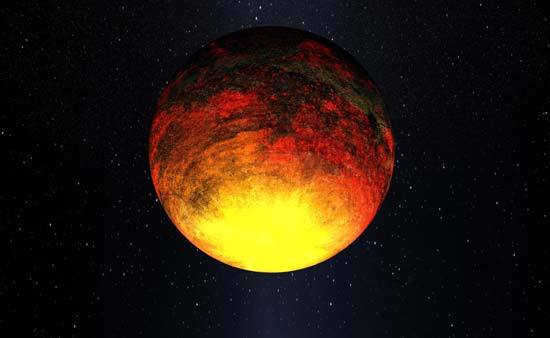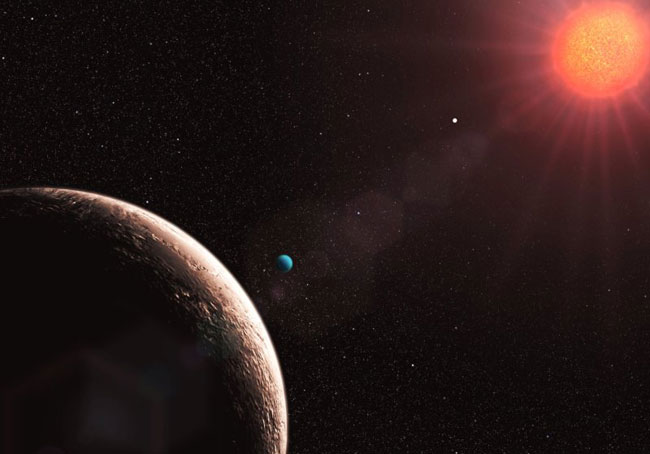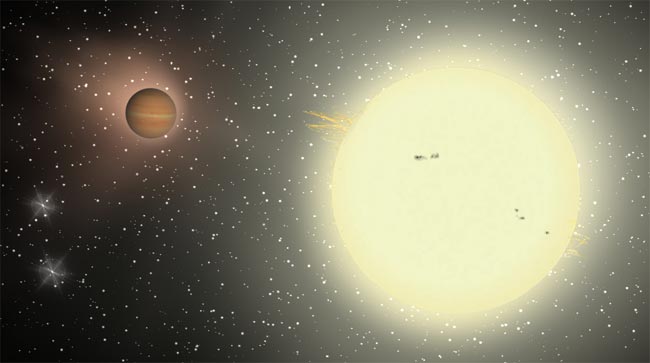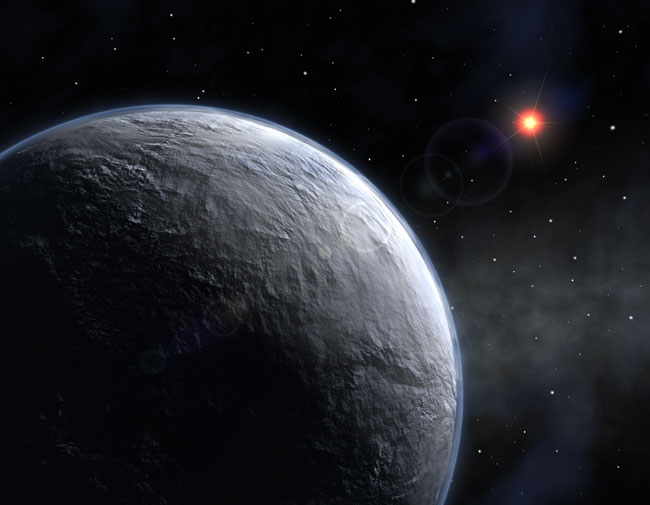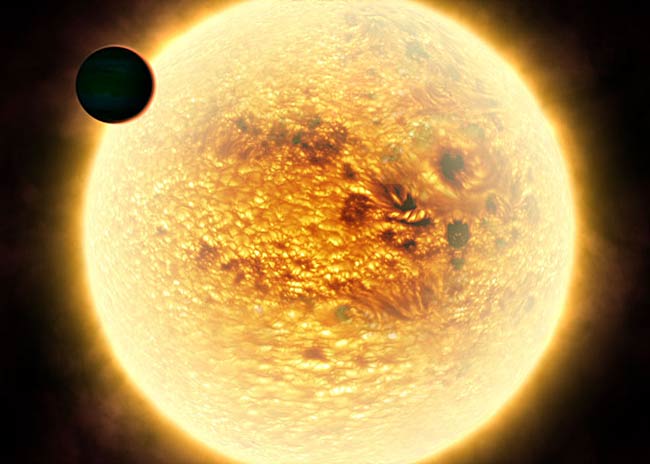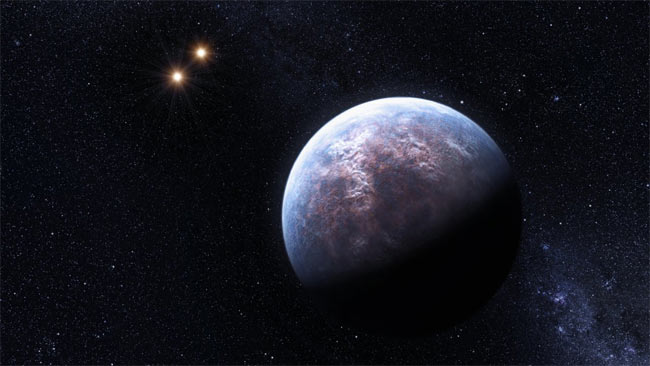The Strangest Alien Planets in Pictures
Mega-Earth Kepler-10c Planet
An artist's illustration of the mega-Earth planet Kepler-10c, the"Godzilla of Earths" planet that is 2.3 times the size of Earth and 17 times heavier. The planet and its lava-world sibling Kepler 10b (background) orbit the star Kepler-10 about 570 light-years from Earth, in the constellation Draco. Image released June 2, 2014.
The Smallest
This artist's concept of Kepler-10b shows the smallest known exoplanet, announced in January 2011. [Full Story]
Earth-Mass Gassy Planet KOI-314c
KOI-314c, shown in this artist's conception, is the lightest planet to have both its mass and physical size measured. Surprisingly, although the planet weighs the same as Earth, it is 60 percent larger in diameter, meaning that it must have a very thick, gaseous atmosphere. It orbits a dim, red dwarf star (shown at left) about 200 light-years from Earth.
The Former Champ
Gliese 581 e used to hold the title of smallest alien planet. However, it was dethroned in January 2011, with the announcement of Kepler-10b. [Full Story]
The Biggest
The largest exoplanet ever discovered is also one of the strangest and theoretically should not even exist, scientists say. Dubbed TrES-4, the planet is about 1.7 times the size of Jupiter and belongs to a small subclass of so-called puffy planets that have extremely low densities. The planet is located about 1,400 light years away from Earth and zips around its parent star in only three and a half days. [Full Story]
Closest Alien World to Us
Epsilon Eridani b orbits an orange Sun-like star only 10.5 light years away from Earth. It is so close to us telescopes might soon be able to photograph it. It orbits too far away from its star to support liquid water or life as we know it, but scientists predict there are other stars in the system that might be good candidates for alien life. [Full Story]
Volcanic Nightmare
This planet, CoRoT-7b, was the first confirmed rocky world outside our solar system, but it doesn't look like a particularly pleasant place to live. It is tidally locked to its parent star, sees hellish 4,000 degrees Fahrenheit (2,200 degrees Celsius). It may also rain rocks and be the core of a vaporized gas giant. [Full Story]
Breaking space news, the latest updates on rocket launches, skywatching events and more!
Multiple Sunsets Like Tatooine
Luke Skywalker’s home planet of Tatooine in Star Wars had two suns, but that’s paltry compared to a Jupiter-like planet 149 light-years from Earth. This planet has three suns, with the main star similar in mass to our own sun. The triple-star system is known as HD 188753. Like Tatooine, the planet there is likely pretty hot – it orbits very close to the main star, completing one orbit every 3.5 days. [Full Story]
Coldest and Farthest From Us
With a surface temperature of -364 degrees Fahrenheit (-220 degrees Celsius), the extrasolar planet known as OGLE-2005-BLG-390L b is likely the coldest alien world. It is about 5.5 times as massive as Earth and thought to be rocky. It orbits a red dwarf star about 28,000 light-years away, making it the most distant exoplanet currently known. [Full Story]
Hottest World
A planet called WASP-12b is the hottest planet ever discovered (about 4,000 degrees Fahrenheit, or 2,200 degrees Celsius), and orbits its star closer than any other known world. It orbits its star one every Earth day at a distance of about 2 million miles (3.4 million km). WASP-12b is a gaseous planet, about 1.5 times the mass of Jupiter, and almost twice the size. It is 870 light-years from Earth. [Full Story]
Super-Earth
Astronomers are finding many worlds now in a category of worlds called Super-Earths, which are between 2 and 10 times the mass of our own Earth. Some scientists think such worlds could be more susceptible to forming the conditions for life because their cores are hot and would be conducive to geological upheaval through volcanism and plate tectonics. [Full Story]

Space.com is the premier source of space exploration, innovation and astronomy news, chronicling (and celebrating) humanity's ongoing expansion across the final frontier. Originally founded in 1999, Space.com is, and always has been, the passion of writers and editors who are space fans and also trained journalists. Our current news team consists of Editor-in-Chief Tariq Malik; Editor Hanneke Weitering, Senior Space Writer Mike Wall; Senior Writer Meghan Bartels; Senior Writer Chelsea Gohd, Senior Writer Tereza Pultarova and Staff Writer Alexander Cox, focusing on e-commerce. Senior Producer Steve Spaleta oversees our space videos, with Diana Whitcroft as our Social Media Editor.

